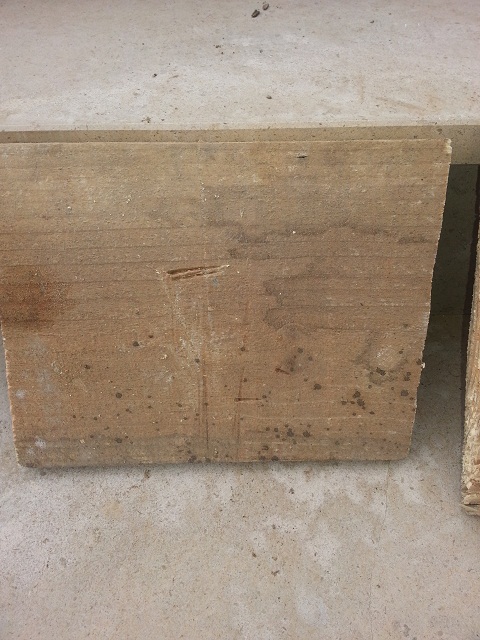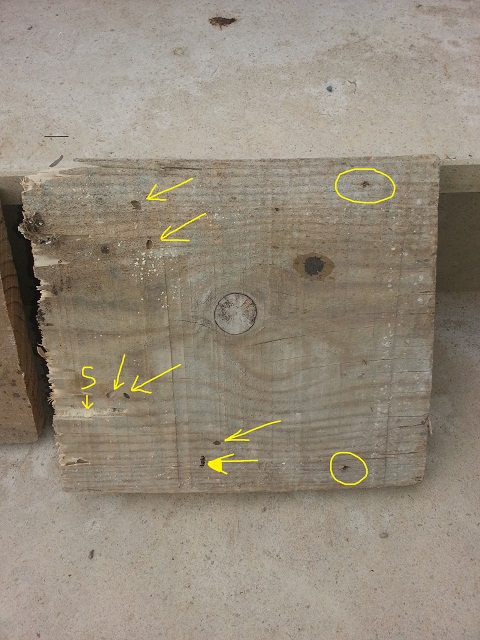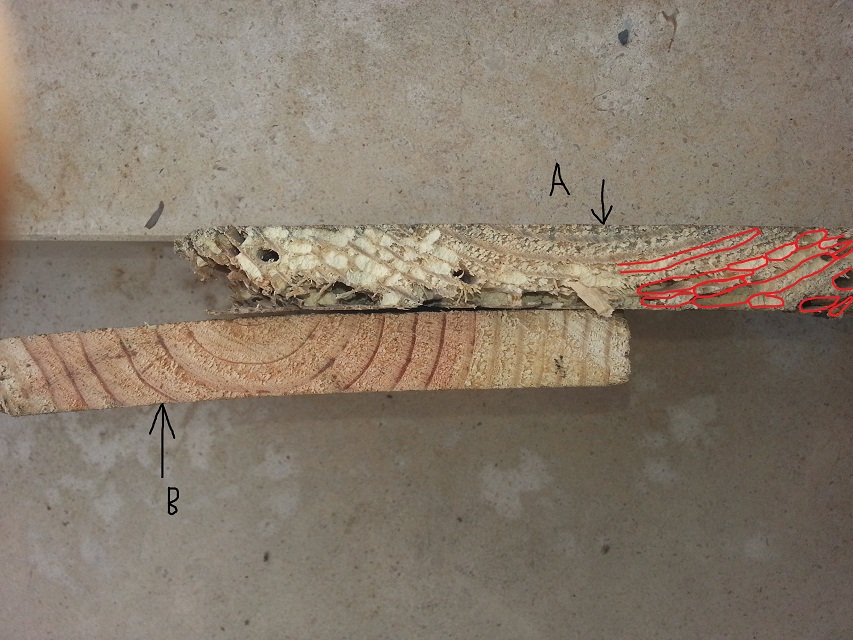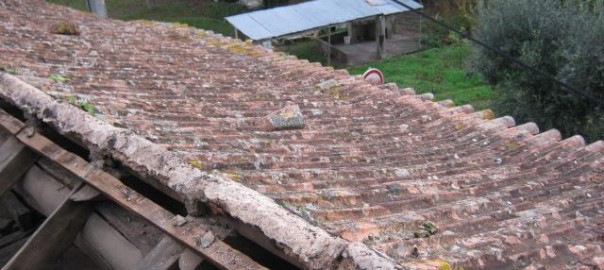Wood Worm
Refurbishing a house last week we removed a couple of pieces of wood that had been installed next to each other. The difference between the two wooden boards shows us a lot about wood worm infestations.
Timber B Wood Worm The wood looks normal for something that’s been in place for 20 or more years. There are external marks and scuffs but no sign of significant woodworm infestation and yet it was part of a house thoroughly riddled with wood worm.

Timber A – Wood Worm
Is a different story and a close look ( identified by arrows ) shows the slightly oval holes in the side of the wood. The circular marks are pointing out old nail holes so that you can distinguish between the effects of man and woodworm.

Then there is an item marked with a yellow “S” this highlights what is often the first noticeable sign that your house has a wood worm problem.
The dust is actually the excrement of the woodworm. Small bites of wood that have passed through the wood worm in its lava stage. These tunnels can go for several meters undetected and often the lava chomp holes that are very close together in a team effort that is dangerous to the stability of your roof and floors.
Overall I think you would agree that the timber looks not too bad, strong and will last many more years particularly if you buy an aerosol of wood worm killer and squirt it up the holes.
That will sort them out !!!
Not quite ! As stated previously the holes the lava chews out are filled with chewed up wood which looks like fine sawdust and the lava could be a meter along its burrow (your house) Unfortunately our aerosol treatment is having no effect at all. You may sleep more soundly but you are on borrowed time as the crunching continues.
Now for a look at a a cross section of the two timbers. Timber B – Wood Worm. The wood looks normal and there is a good reason for this which I will come back to later.
 Timber A Is a different story I have coloured the tunnels chewed by the lava on the right hand side of the timber in red so that they are easy to identify.
Timber A Is a different story I have coloured the tunnels chewed by the lava on the right hand side of the timber in red so that they are easy to identify.
Have a look at the left hand side and you will be able to identify the light coloured oval spaces where the tunnels are blocked with wood worm sawdust.
The shocking thing is that this piece of timber has lost at least 70% of its strength and yet on the surface looks “not too bad”.
Treating wood work requires experience.
If you believe that you have a problem and want it checked call Castelo Construction Lda who will be able to help you. 00351 927168247. So what is doing the damage and why is timber “A” in such good condition.
Firstly the culprit is the house longhorn beetle and its work is recognized by its oval exit holes and ling tunnels running along the grain of the wood.
Secondly it prefers to eat softwoods. Timber A is cut from close to the center of the tree were the wood is harder so it wasn’t effected. Ah ha ! we have a solution use only hardwood……… Sadly there are plenty of other wood worm in Portugal who love hard wood ! To learn more visit www.casteloconstruction.com


